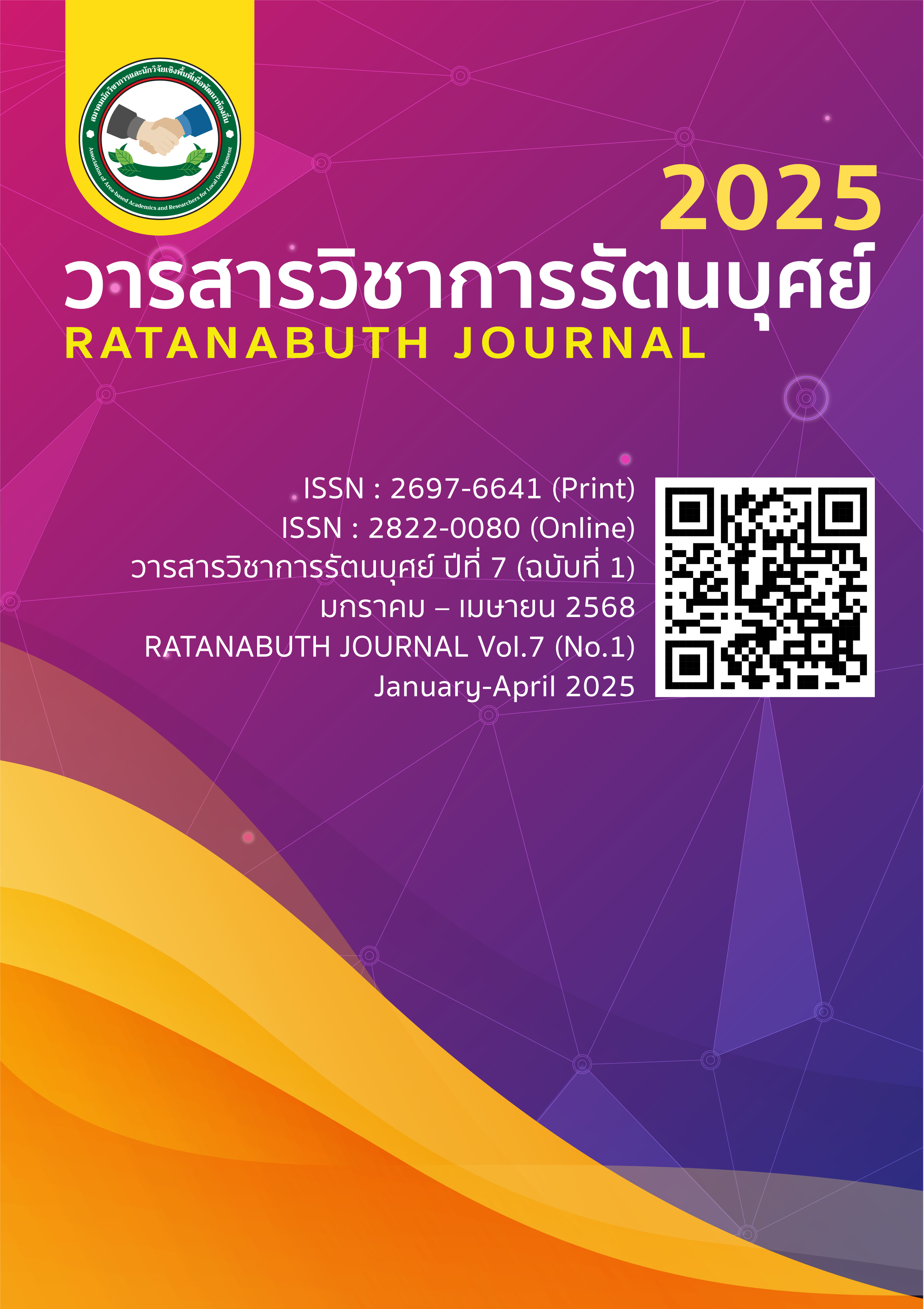Model of Political Expression of People in the Northeastern Region Model of Political Expression of People in the Northeastern Region
Main Article Content
Abstract
This research aims to 1) study the level of political expression of people in the Northeast, 2) study the factors affecting political expression of people in the Northeast, and 3) create and confirm a model of political expression of people in the Northeast. The mixed research method was divided into 3 phases: Phase 1 was a quantitative research. The sample consisted of 400 people in the Northeast, who were selected by using Taro Yamane's formula, using the proportional sampling method and simple random sampling. The research instrument was a questionnaire. Data were analyzed using descriptive statistics, mean, percentage, standard deviation, and structural equation analysis (SEM). Phase 2 was a qualitative research. The target group consisted of 20 experts and stakeholders. The research instrument was an interview form. Phase 3 confirmed the model of political expression of people in the Northeast by experts.
The research results found that (1) the level of decision-making in voting of people in the Northeast was overall at a high level. (2) Factors affecting political expression of people in the Northeast included politicians' qualifications, political marketing factors, and political environment factors. It can predict 48.30 percent with statistical significance at the .01 level. The model is consistent with the empirical data. P-Value = 0.207, / = 1.630, GFI = 0.994, CFI = 0.992, RMSEA = 0.04, SRMR = 0.03 (3) The model of political expression of people in the Northeast region consists of the following development guidelines: 1) Development of politicians' qualities, 2) Development of political marketing, 3) Development of political environment, and (4) The results of the model confirmation are most appropriate and experts have consistent opinions with a median between 4.00-5.00 and an interquartile range of less than 1.5.
Article Details

This work is licensed under a Creative Commons Attribution-NonCommercial-NoDerivatives 4.0 International License.
References
สำนักงานสถิติแห่งชาติ. (2567). จำนวนประชากรในภาคตะวันออกเฉียงเหนือ. สืบค้นเมื่อ 4 มิถุนายน 2567 จาก https://www.nso.go.th.
Amnesty International. (2023). Thailand: Freedom of expression under threat. Form https://www.amnesty.org.
Anderson, J., Brown, L., & Davis, M. (2023). Trust in political leaders and its impact on voter behavior. Political Psychology Review, 34(2), 89–112.
Carter, E., Johnson, R., & Smith, T. (2021). The role of political leaders in shaping public political participation. Journal of Political Behavior, 45(3), 123–145.
Castells, M. (2012). Networks of outrage and hope: Social movements in the Internet age. Polity Press.
Chai, J. (2020). Political patronage and vote-buying in Northeast Thailand. Journal of Southeast Asian Studies, 51(2), 234–250.
Dahl, R. A. (1971). Polyarchy: Participation and opposition. Yale University Press.
Garcia, M., & Martinez, L. (2023). Government policies and political protests: A comparative analysis of rural and urban areas. Political Geography, 87, 102345.
Gonzalez, M., Lee, S., & Thompson, P. (2025). Local political leadership and grassroots mobilization in developing regions. International Journal of Development Studies, 50(4), 201–225.
Habermas, J. (1962). The structural transformation of the public sphere: An inquiry into a category of bourgeois society (T. Burger & F. Lawrence, Trans.). MIT Press. (Original work published 1962)
Huntington, S. P. (1991). The third wave: Democratization in the late twentieth century. University of Oklahoma Press.
Keck, M. E., & Sikkink, K. (1998). Activists beyond borders: Advocacy networks in international politics. Cornell University Press.
Lee, H., Kim, S., & Nguyen, T. (2022). Social media and political participation: A case study of grassroots movements in Southeast Asia. Asian Journal of Communication, 32(4), 456–470.
Lilleker, D. G., Koc-Michalska, K., & Tenscher, J. (2022). Social media and political participation: A comparative study. New Media & Society, 24(3), 789–810.
Locke, J. (1689). Two treatises of government. Awnsham Churchill.
McAdam, D., Tarrow, S., & Tilly, C. (2001). Dynamics of contention. Cambridge University Press.
Norris, P. (2020). Political marketing and voter engagement in rural areas. Journal of Political Communication, 37(4), 512–530.
Olson, M. (1965). The logic of collective action: Public goods and the theory of groups. Harvard University Press.
Smith, J., & Johnson, R. (2021). Political mobilization in agrarian communities: The role of economic inequality and local leadership. Journal of Rural Studies, 45(3), 123–135.
Strömbäck, J., & Kiousis, S. (2023). Political marketing and voter behavior in developing democracies. Political Communication, 40(2), 201–220.
Taylor, C. (1992). Multiculturalism and the politics of recognition. Princeton University Press.
Tilly, C. (1978). From mobilization to revolution. Addison-Wesley.
Verba, S., & Nie, N. H. (1972). Participation in America: Political democracy and social equality. Harper & Row.
Yamane, T. (1973). Statistics: An introductory analysis (3rd ed.). Harper & Row.

